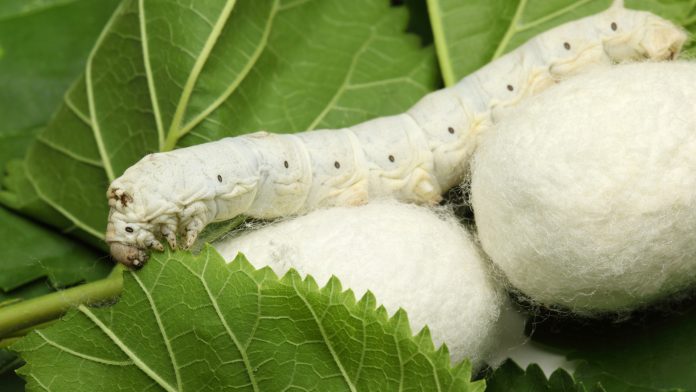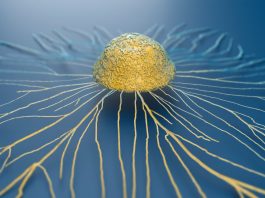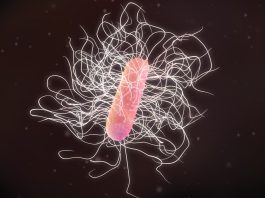Yasuhiko Matsumoto, an Associate Professor at Meiji Pharmaceutical University, has identified silkworms as a potential insect disease model and argues that such in vivo screening is expected to facilitate drug discovery.
According to the World Health Organization (WHO), 422 million people worldwide have diabetes, the majority of whom reside in low-and middle-income countries, with 1.6 million deaths being directly attributed to the disease annually. The WHO also defines diabetes as a ‘chronic metabolic disease characterised by elevated levels of blood glucose (or blood sugar), which leads over time to serious damage to the heart, blood vessels, eyes, kidneys, and nerves.’1
The International Diabetes Federation2 explains that there are three types of diabetes:
- Type 1 diabetes occurs most frequently in children and adolescents but can develop at any age. Those with Type 1 diabetes require daily insulin injections to maintain and control blood glucose levels as their bodies produce very little or no insulin;
- Type 2 diabetes, the most common type of the disease, accounts for around 90% of all diabetes cases and is more common in adults. Those with this type of the disease do create insulin, but their bodies either don’t produce enough to function properly, or their body’s cells don’t react to the insulin that is produced, meaning that glucose stays in the blood and isn’t used as fuel for energy;3
- Gestational diabetes (GDM), which consists of high blood glucose during pregnancy.
- While a healthy lifestyle, including increased physical activity and a healthy diet, are key to managing Type 2 diabetes, many of those with the disease will nevertheless require oral drugs and/or insulin in the same way as those with Type 1, in order to keep their blood glucose levels under control.
According to diabetes.co.uk,4 there are a number of different types of anti-diabetic drugs available, including:
- Insulin;
- Pramlintide (Amylin);
- GLP-1 receptor agonists (such as Byetta and Victoza); and
- Oral hypoglycemics (tablets).
Novel anti-diabetic drugs
Many drugs taken by diabetic patients are designed to reduce hyperglycaemia and morbidities such as cardiovascular disease and microvascular complications such as chronic kidney disease (CKD) or retinopathy, which are associated with the disease.5 However, while there has been a change in clinical guidelines in recent years with regards to the prescription of these drugs – and which, as has been shown in the literature, has been followed by a shift in the medicines being prescribed – many such drugs continue to have a minimal impact on reducing the aforementioned associated morbidities, and only tend to act on regulating glucose levels and delaying diabetes complications. Indeed, while drugs that tackle insulin resistance are often prescribed for patients with Type II diabetes, drug-resistance and side effects are a major concern and so the development of novel anti-diabetic drugs is required.
As Dr Dimitris J Richter, Head of Cardiac Department at Euroclinic Hospital, Athens, Greece, and Chairperson of the European Society of Cardiology (ESC) Council for Cardiology Practice 2018-2020, has highlighted, there are now new anti-diabetic drug generations that are also able to provide direct cardiovascular benefits with short-term reduction of CV mortality, such as SGLT2 inhibitors and GLP-1 agonists.6
Nevertheless, here, as in all drug-development areas, the path to approval is both slow and expensive, with any new drug required to undertake several stages of clinical trials, including trials in humans, before they can be considered for regulatory approval. As such, while research – and indeed trials – will, of course, continue in the search for the next generation of anti-diabetic therapeutics, there is also a need to find new ways to reach this approval quicker without compromising safety.
Animal trials already form a part of the drug development pathway, with medicines being required to be tested on animals before clinical trials on humans by laws and regulatory agencies around the world. These candidate drugs are tested using in vitro evaluation systems before their efficacy is examined in animal experiments as in vivo evaluations. They are then able to be tested to determine whether they are effective against human diseases in clinical trials.
However, many such drug candidates do not show therapeutic effects in animal experiments due to pharmacokinetics and toxicity problems in the in vivo evaluations. This has proven to be a significant hurdle in the drug development process and while solutions have been difficult to find, one answer to this problem could be the use of insect disease models that allow in vivo screening to be performed.
Insect disease models
According to Yasuhiko Matsumoto, an Associate Professor at Meiji Pharmaceutical University, insects have various advantages as experimental animals, including the low cost involved in their rearing and few ethical concerns. He has also pointed out that large-scale in vivo screening can be conducted by researchers to find drug candidates.
Matsumoto’s research has identified silkworms as being a prime candidate for studies of drug efficacy, pharmacokinetics, and toxicity, and he has also argued that the use of insect disease models for in vivo screening is expected to facilitate drug discovery.
Silkworms
Matsumoto’s studies have shown that sugar levels in silkworm blood increase immediately (within an hour) following the intake of a high-glucose diet and, along with his team, Matsumoto has also demonstrated that the administration of human insulin decreases elevated hemolymph sugar levels in silkworms.7
While they found, however, that the administration of pioglitazone or metformin, drugs used clinically for the treatment of Type II diabetes, had no effect in their hyperglycemic silkworm model, they went on to establish a silkworm model of Type II diabetes for the evaluation of anti-diabetic drugs such as pioglitazone and metformin.
Within this study, they discovered that those silkworms fed with a high-glucose diet over a period of 18 hours exhibited a hyperlipidemic phenotype and, indeed, that the hyperlipidemic silkworms had impaired glucose tolerance, ‘characterised by high fasting hemolymph sugar levels and higher hemolymph sugar levels in a glucose tolerance test.’ For Matsumoto, ‘these findings suggest that the hyperlipidemic silkworms are useful for evaluating the hypoglycemic activities of candidate drugs against Type II diabetes.’
How E. faecalis YM0831 benefits human health
Matsumoto and his research team have also shown how Enterococcus faecalis YM0831, a lactic acid bacterial strain identified using silkworms, benefits human health. As diabetes is caused by toxicity due to postprandial hyperglycemia, agents suppressing postprandial hyperglycemia are effective in the prevention and treatment of diabetes, and E. faecalis YM0831 was found to have inhibitory activity against glucose transport in the isolated silkworm intestine, suppressing both sucrose- and glucose-induced hyperglycemia in silkworms.9
In addition to demonstrating that in vivo screening using a postprandial hyperglycemia model in silkworms identified E. faecalis YM0831 as a functional lactic acid bacterium that suppresses postprandial hyperglycemia, Matsumoto also explained that E. faecalis YM0831 inhibited postprandial hyperglycemia in humans. Therefore, substances beneficial to human health can be obtained using human disease silkworm models.
“In conclusion,”’ Matsumoto said, “human disease models using insects are useful for identifying drug candidates in large-scale in vivo screening. However, we need to generate a better understanding of the advantages of using insect models of human disease, and further research on the pharmacokinetics and toxicity of compounds will help us to achieve that.”
As such, the argument for a continued and expanded use of disease models for drug discovery at the basic study stage is clear.
References
- who.int/health-topics/diabetes#tab=tab_1
- idf.org/aboutdiabetes/what-is-diabetes.html
- nhsinform.scot/illnesses-and-conditions/diabetes/type-2-diabetes
- diabetes.co.uk/diabetes-medication/antidiabetic-drugs.html
- https://bmjopen.bmj.com/content/8/7/e022768
- escardio.org/Councils/Council-for-Cardiology-Practice-(CCP)/News/new-antidiabetic-drugs-and-cardiovascular-outcomes
- Matsumoto Y, Sumiya E, Sugita T, Sekimizu K. ‘An invertebrate hyperglycemic model for the identification of anti-diabetic drugs’. PLoS One. 2011 6(3):e18292. doi: 10.1371/journal.pone.0018292
- Matsumoto Y, Ishii M, Hayashi Y, Miyazaki S, Sugita T, Sumiya E, Sekimizu K. ‘Diabetic silkworms for evaluation of therapeutically effective drugs against type II diabetes’. Sci Rep. 2015 5:10722. doi: 10.1038/srep10722
- Matsumoto Y, Ishii M, Hasegawa S, Sekimizu K. ‘Enterococcus faecalis YM0831 suppresses sucrose-induced hyperglycemia in a silkworm model and in humans’. Commun Biol. 2019 2:157. doi: 10.1038/s42003-019-0407-5
Dr Yasuhiko Matsumoto Ph.D.
Associate Professor of Microbiology
Department of Microbiology
Meiji Pharmaceutical University
+81 42 495 8611
ymatsumoto@my-pharm.ac.jp
www.my-pharm.ac.jp/en/
Please note, this article will also appear in the fourth edition of our new quarterly publication.









